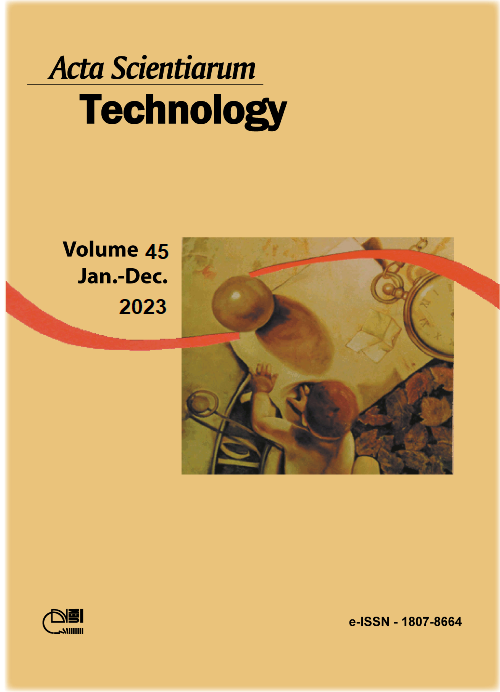Optimization of osmotic pretreatment of tomato slices using response surface methodology and further hot-air drying
DOI:
https://doi.org/10.4025/actascitechnol.v45i1.62457Palavras-chave:
pulsed vacuum osmotic dehydration; sodium uptake; central composite design; dried tomato.Resumo
Tomato is one of the most cultivated vegetables, playing important role in the human feed. Due to its characteristics and composition, tomatoes present reduced shelf life, and preservative techniques are required. In this study, response surface methodology was used to optimize process conditions during the osmotic dehydration (OD) of tomato slices, through the desirability function. Optimization factors were absolute pressure (21-89 kPa), vacuum application period (7-15 min), and osmotic solution water activity (0.893-0.943), while investigated responses were sodium incorporation (NaI), water loss (WL), solid gain (SG), weight reduction (WR), and osmodehydrated product water activity (ODaw). The optimized conditions were achieved, and a further hot-air drying (HAD) was conducted at different temperatures and air velocities. During the OD, lower absolute pressure, and osmotic solution water activity led to lower NaI and higher WL and WR. Shorter drying time and higher diffusivity were obtained at higher temperature and air velocity, during the HAD. The dried tomato slices with sodium incorporation reduction were evaluated with regard to the final water activity, rehydration and color, in which no significant differences (p > 0.05) were observed between the treatments.
Downloads
Downloads
Publicado
Como Citar
Edição
Seção
Licença
DECLARAÇíO DE ORIGINALIDADE E DIREITOS AUTORAIS
Declaro que o presente artigo é original, não tendo sido submetido í publicação em qualquer outro periódico nacional ou internacional, quer seja em parte ou em sua totalidade.
Os direitos autorais pertencem exclusivamente aos autores. Os direitos de licenciamento utilizados pelo periódico é a licença Creative Commons Attribution 4.0 (CC BY 4.0): são permitidos o compartilhamento (cópia e distribuição do material em qualqer meio ou formato) e adaptação (remix, transformação e criação de material a partir do conteúdo assim licenciado para quaisquer fins, inclusive comerciais.
Recomenda-se a leitura desse link para maiores informações sobre o tema: fornecimento de créditos e referências de forma correta, entre outros detalhes cruciais para uso adequado do material licenciado.















